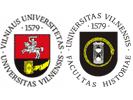In this article it is shown that romantic Baltophylia (a historical, cultural concept of the authors who treat the past of the Balts, the first Pagonism, as a separate, civilized, closed system, putting it in opposition to Western, Christian culture) takes root in Lithuanian historiography and doesn’t induce its modernity, nor its overthrowing of historicism; it only weakly influences Latvian historiography.
Baltophylic works are clearly not plenty. They don’t even make up a separate, historiographical section. Latvian’s haven’t had such a phenomenon as Daukantas who had, for a long time, traced the direction of foundational, historical thought. The very first Latvian nationalist, G. Merkelis, was not a romantic, but he supported the ideals of the Enlightenment. Many of the Latvian Renaissance men were only slightly interested in history and they, therefore, drew their attention to the research of culture and art. The most notable XIX century Latvian historian, Janis Krodznieks, was not a romantic, but a critic.
Protestant ethics and the critical German historiographical influence encouraged the critical debates of the Latvian historians. Between the First and Second World Wars, Baltophylic idealization of the past was almost unprecedented, because Latvia didn’t have international territorial problems. History, as well, didn’t play such a big part in the revival of society nor such an educational role, as it did in Lithuania.
Baltophylic phenomena in Latvian historiography are, however, precedented. A number of Latvian historians, treating Livonia like a German state, idealizad the Lithuanian Grand Duchy, indicating that it was not solely Lithuanian, but Latvian too; a pure state of the Balts. In 1858, J. Alunanas published a rather abstract Lithuanian historical work that covered the space of time up until the Battle of Zalgiris and, in 1885, F. Veinberas published a joint Latvian and Lithuanian history, up until Lithunia’s unionization with Poland. In these works, Lithuianian princes were extolled, while the reception of Christinity was valued as the largest misfortune.
The most distinct Baltophylic phenomenon in Latvian historiography is the demonstration that, until the German arrival at the end of the XII century and the beginning of the XIII century, Latvians didn’t have a real, fully-worthy state system. Kuoknese and Jersika were real states, but they were divided, not united.
Of the most solid, most valuable Latvian historical Baltophylic texts, A. Svalis’ are the most distinguished: “True Latvian History,“ “Latvian History“ (a course manual), and ”Latvian Cultural History“ (two volumes).
|


 dizainas ir programavimas giriaus
dizainas ir programavimas giriaus  dizainas ir programavimas giriaus
dizainas ir programavimas giriaus